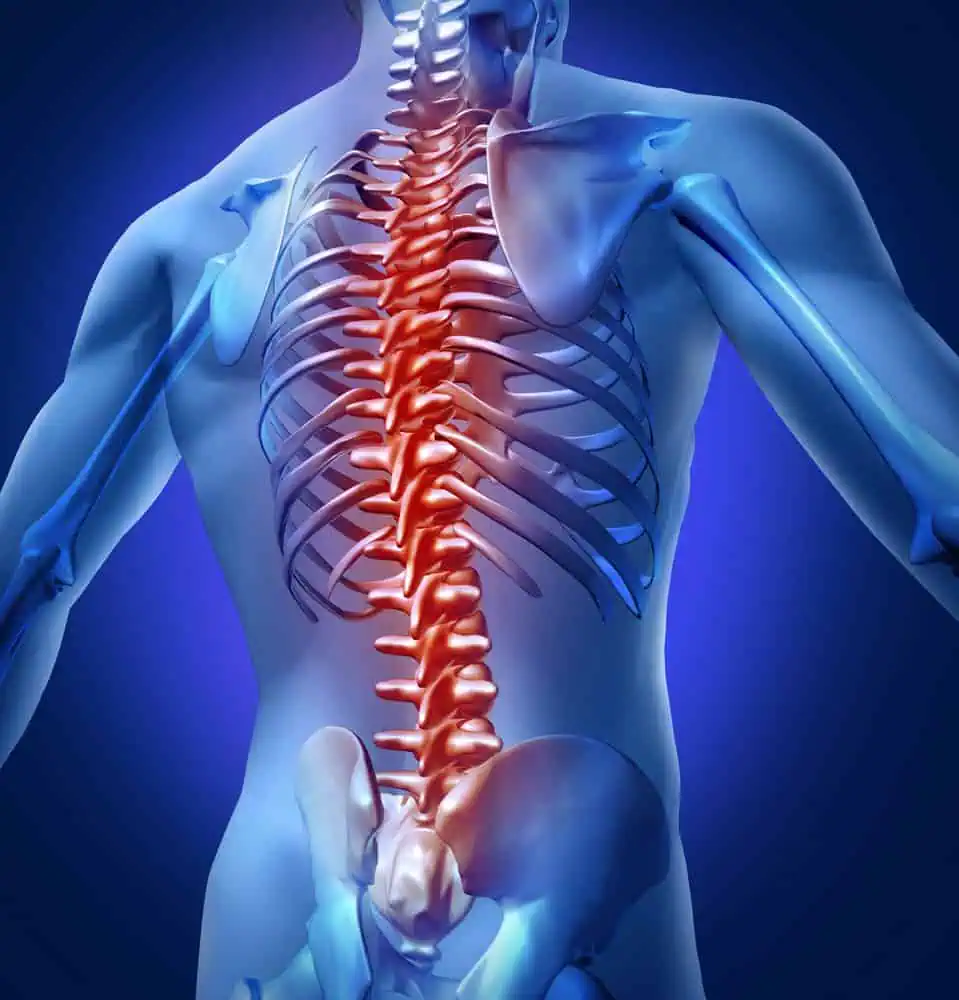Medial branch nerve blocks are a targeted treatment approach for managing spinal pain pertaining to the facet joints, which are small stabilizing joints located between and behind adjacent vertebrae. Designed to reduce inflammation and provide pain relief, the procedure involves the injection of a local anesthetic, with or without a corticosteroid, directly adjacent to the medial branch nerves. These nerves transmit pain signals from the facet joints to the brain; blocking these signals can provide valuable diagnostic information and therapeutic relief for patients suffering from chronic back pain.

Before undergoing a medial branch block, we understand the importance of being well-informed about the entire process. It starts with a thorough evaluation to determine the suitability of the procedure. The actual injection is minimally invasive and can be performed on an outpatient basis. Afterwards, observations are made to monitor immediate pain responses, which helps to assess the efficacy of the treatment. While there are significant benefits associated with medial branch blocks, including reduced pain and improved function, we’re also mindful of the potential risks and are prepared to discuss alternative treatments to ensure the best patient outcomes.
Key Takeaways
- Medial branch blocks target pain signals from the facet joints.
- The procedure includes diagnostic and therapeutic advantages.
- We’re committed to patient education on benefits and risks.
Overview of Medial Branch Nerve Blocks
Medial branch nerve blocks are minimally invasive procedures we perform for pain relief in patients with back pain originating from the facet joints. These joints are located at each segment of the spine and can cause discomfort due to arthritis, injury, or other conditions.
During the procedure, we inject a local anesthetic, which sometimes includes a corticosteroid, near the medial branch nerves. These nerves carry pain signals from the facet joints to the brain.
Why are they used?
- Diagnostic: To determine if the facet joints are the source of pain.
- Therapeutic: To provide temporary relief from pain at the identified source.
The process involves the following steps:
- Patient positioning: Lying face down.
- Area preparation: Cleaning and numbing the injection site skin.
- Guided injection: Using fluoroscopy or CT scan for accuracy.
Expected Results:
- Immediate pain relief from the anesthetic signifies the targeted facet joint as the pain source.
- Duration of relief varies; steroid use extends the analgesic effect.
Complications are rare but may include infection, bleeding, or allergic reaction to the medication.
By utilizing a medial branch block, we can better understand the pain’s origin and proceed with an appropriate treatment plan. This nerve block serves as a valuable tool in our arsenal for managing spinal pain effectively and safely.
Anatomy and Physiology
Understanding the anatomy and physiology of the medial branch nerves and their relationship with the spine and facet joints is essential for grasping how medial branch nerve blocks work. We’ll examine the components involved, including the spine’s structure, the role of the medial branch nerves, and how facet joints contribute to movement and pain.

Spinal Anatomy
The spine is a complex column of vertebrae that supports our body and provides the central structure for our skeletal system. Each vertebra is a small bone stacked on top of one another, and they are connected by facet joints or zygapophysial joints, which allow for flexibility and movement. The nerves that supply these joints emerge from the spinal cord and branch out through the dorsal ramus.
Medial Branch Nerves
The medial branch nerves are offshoots of the dorsal ramus that innervate the facet joints. They play a crucial role by transmitting sensory information, including pain, from the facet joints to our brain. When these nerves relay signals of pain due to conditions like arthritis or injury, it often results in discomfort or a limited range of motion.
Facet Joints
Facet joints, also known as zygapophysial joints, are pairs of small joints between the vertebrae in our spine. They are lined with cartilage and encased in a fibrous capsule to aid smooth movement between the bones. These joints can become arthritic or injured, leading to back pain, which the medial branch nerves may then carry to the brain.
Indications for Medial Branch Blocks
Medial branch blocks are procedures we commonly recommend for patients experiencing persistent pain in the spine due to various conditions. These blocks can aid both in the diagnosis and management of spinal pain.

Chronic Pain Conditions
Medial branch nerve blocks are particularly beneficial for those suffering from chronic pain conditions. Commonly, we see improvement in patients with chronic low back pain or neck pain that stems from degenerative changes like osteoarthritis. The aging process can lead to wear and tear of the facet joints, often resulting in chronic discomfort. In cases where conventional therapies have not provided adequate relief, medial branch blocks can be a preferred option for pain management.
Diagnostic Purposes
We also use medial branch nerve blocks for diagnostic purposes. The procedure involves injecting a local anesthetic near the medial branch nerves that transmit pain signals from the facet joints. If a patient experiences significant pain relief shortly after the injection, we can often confirm that the facet joints are indeed the source of pain. This can be a critical step before considering more permanent interventions, such as radiofrequency ablation. Conditions like whiplash or injuries precipitating back pain can often be pinpointed using this method, allowing us to tailor future treatments to the patient’s specific needs.
Preparation for the Procedure

Before undergoing a medial branch nerve block, it’s crucial to follow specific preparation steps to ensure the procedure’s effectiveness and safety. Our focus is on two primary aspects: evaluating the patient thoroughly and obtaining consent after detailed patient education about the procedure.
Patient Evaluation
We begin with a thorough patient evaluation, which typically involves a detailed medical history and a physical examination. Our pain physician may request imaging tests, such as an x-ray or fluoroscopy, to pinpoint the areas of pain and to plan the precise location for the injection.
Procedure Consent
After the evaluation, it is compulsory for us to acquire informed consent. We meticulously explain the procedure details, potential benefits, and risks associated with the nerve block. We ensure that patients understand the temporary nature of the relief provided by the local anesthetic and the possibility of including a corticosteroid in the injection.
Medial Branch nerve Block Procedure

The medial branch block procedure is a targeted treatment to alleviate pain in the spine. We’ll guide you through the injection technique and the importance of fluoroscopic guidance to ensure accuracy and safety during the procedure.
Injection Technique
In medial branch nerve blocks, we inject a local anesthetic directly adjacent to the medial branch nerves, which innervate the facet joints in the spine. Here’s a step-by-step overview:
- Preparation: We clean the injection site with an antiseptic solution to minimize infection risk.
- Anesthetic: We apply a numbing medicine to the skin and tissue above the medial branch to ensure your comfort.
- Injection: Using a fine needle, we administer the local anesthetic—and sometimes a corticosteroid—near the medial branch nerves.
Fluoroscopic Guidance
For optimal precision, we use fluoroscopy, which is a type of x-ray guidance, during the medial branch block procedure.
- Live Imaging: Fluoroscopy provides real-time x-ray images, enabling us to view the needle’s path and ensure correct placement.
- Contrast Dye: We may inject a contrast dye to visualize the area more clearly and confirm that the medication disperses properly around the medial branch nerves.
By following these detailed procedures, we maximize the efficacy of medial branch blocks and aim for significant pain relief.
Post-Procedure Considerations
Following a medial branch nerve block, we must pay close attention to how our body responds during the recovery phase, as well as evaluate the effectiveness of the block for pain relief. Our chief aims post-procedure are ensuring proper aftercare and observing any changes in pain levels.
Recovery and Aftercare

After receiving a medial branch nerve block, we adhere to specific aftercare instructions to ensure successful recovery. For the initial 4–6 hours, we may experience numbness in the treated area; during this period, it is advisable to:
- Avoid driving or engaging in activities that require full concentration.
- Refrain from swimming or soaking in a pool until our doctor advises.
- Limit our physical activities according to the guidance provided by our healthcare professional.
We align our activities with the treatment plan and may be asked to note any changes in our pain levels to assess the block’s effectiveness.
Observation of Pain Relief
As our body metabolizes the local anesthetic, we stay observant for pain relief or reduction. It’s key to:
- Monitor and document pain levels rigorously.
- Follow up with prescribed physical therapy as part of our comprehensive care.
- Communicate the outcomes with our healthcare provider to make necessary adjustments to our treatment plan.
By meticulously tracking the changes post-procedure, we facilitate a more informed and effective pain management strategy.
Benefits of Medial Branch Nerve Blocks

When we consider treatments for managing spine-related pain, medial branch nerve blocks stand out due to several benefits they provide. Our main goal is effective pain relief, and these nerve blocks target the small nerves that carry pain signals, known as medial branch nerves.
- Targeted Pain Management: By administering a local anesthetic, possibly with a corticosteroid, these injections precisely target the nerves, leading to a reduction in pain from the affected facet joints.
- Diagnostic Utility: We can use medial branch nerve blocks to diagnose the source of back pain. If pain diminishes significantly after the procedure, it confirms that the medial branch nerves are the pain contributors.
- Minimally Invasive: The procedure is minimally invasive, which means it’s generally safe and doesn’t require a lengthy recovery time.
- Temporary Pain Relief: Initially, the relief from pain is temporary, serving as a bridge to other long-term treatments.
The duration of pain relief can vary from patient to patient, with some experiencing relief for weeks or even months. In cases where patients achieve longer pain relief, repeat injections or more definitive procedures may be considered. It’s important to approach each case individually, assess patient response, and plan subsequent treatments for continued management of spine-related pain.
Medial branch nerve blocks, therefore, not only offer an opportunity for immediate pain control but also play a crucial role in the overall pain management strategy.
Potential Risks and Complications
When we discuss medial branch nerve blocks, it’s crucial for us to acquaint ourselves with the potential risks and complications that can arise from this procedure. Our focus is to inform on what may typically occur in terms of common side effects, and on the rarer occasions, serious complications.
Common Side Effects
Medial branch nerve blocks, like most medical procedures, can have side effects. These side effects are generally mild and resolve without additional treatment. The most common amongst these are:
- Temporary soreness at the injection site, which can be treated with ice and rest.
- Numbness or tingling, often due to the anesthetic and typically subsiding within hours.
- Allergic reaction to the medication used, although rare, may manifest as skin rashes or itching.
Serious Complications
Although not common, there are serious complications that we must be mindful of:
- Infection: Rarely, the injection site can become infected, requiring medical attention.
- Bleeding: Patients with underlying bleeding disorders are at higher risk for bleeding complications.
- Nerve damage: An incorrect needle placement can lead to damage, though skilled practitioners minimize this risk.
It is essential to be aware of these risks to make informed decisions about undergoing a medial branch block. Should any severe side effects or signs of complications arise after the procedure, seeking prompt medical consultation is key.
Alternatives and Complementary Treatments
We understand the importance of exploring various treatment options for managing pain. In this section, we will look into reliable alternatives and complementary treatments for those seeking options beyond medial branch nerve blocks.
Radiofrequency Ablation
Radiofrequency ablation (RFA) is a procedure that goes a step further than traditional nerve block injections. Where a nerve block temporarily interrupts pain signals, RFA uses heat to deactivate the nerve that’s causing the pain. This can provide relief for an extended period, often exceeding one year, compared to the shorter duration relief from a medial branch block.
Physical Therapy
Physical therapy is a cornerstone of conservative treatment that doesn’t rely on injections or surgery. Through tailored exercises and manual therapy, we aim to enhance mobility and strengthen the muscles supporting the spine. Not only can physical therapy provide pain relief, but it also addresses the root cause by improving the function of affected areas.
Spinal Stenosis
When dealing with spinal stenosis, a condition where the spinal canal narrows and compresses the nerves, we consider non-invasive treatments such as physical therapy. However, specific interventions like facet joint injections can deliver targeted relief and may serve as a therapeutic option, which helps to reduce inflammation and alleviate pain.
Patient Outcomes
When evaluating the efficacy of medial branch nerve blocks, we focus on several key outcome metrics such as success rates, the longevity of symptom relief, and overall patient satisfaction. These factors together provide a comprehensive overview of the treatment’s impact on those dealing with spinal pain.
Success Rates
Success rates for medial branch nerve blocks can fluctuate based on the criteria set for relief and the treatment plan utilized. Studies indicate that using these blocks, especially when combined with a treatment plan that includes radiofrequency neurotomy, can result in 50-60% of patients achieving significant pain relief. The initial response to the nerve block often guides further treatment decisions.
Long-Term Efficacy
Regarding long-term efficacy, medial branch nerve blocks provide diagnostic value that informs a strategic treatment plan. The duration of pain relief can greatly vary, but many patients experience benefits lasting several months. Subsequent treatments, including radiofrequency neurotomy, may be recommended for sustained relief.
Patient Satisfaction
Patient satisfaction serves as a key indicator of treatment success. Satisfaction levels correlate highly with the achievement of significant pain relief and the minimization of treatment side effects. Reports reflect that when patients experience notable pain reduction, their satisfaction with medial branch nerve blocks increases, endorsing the procedure’s utility in managing chronic spinal pain conditions.
Frequently Asked Questions
In this section, we provide answers to some of the most common inquiries about medial branch nerve block procedures to help you understand what to expect and how to navigate the outcomes.
What are the next steps if a medial branch nerve block is ineffective?
If the medial branch nerve block does not provide relief, we may consider alternative pain management strategies or diagnostic tests to identify the pain source. This could involve physical therapy, different medications, or further imaging studies.
What is the typical recovery period following medial branch nerve blocks?
The recovery period is usually brief. Most patients can resume their normal activities within a day, but we advise avoiding strenuous activities for the first 24 hours after the procedure.
What can be expected in terms of pain following medial branch nerve blocks?
Initially, you might experience mild discomfort at the injection site. However, pain relief from the block typically begins once the local anesthetic takes effect. This can vary between individuals.
How long are the effects of a lumbar medial branch nerve blocks expected to last?
The duration of pain relief from a lumbar medial branch block can vary significantly. Some patients report relief lasting for weeks or months, while for others it may last only a few days. It is important to track your pain levels post-procedure to inform future treatment decisions.
What are the potential side effects of undergoing a medial branch nerve block?
Most patients experience few if any side effects. However, potential side effects can include soreness at the injection site, allergic reactions to the medications used, or increased pain if the nerve block is diagnostic.
How many injections are typically required during a medial branch nerve block procedure?
Usually, one medial branch nerve block injection is given per affected nerve. The exact number of injections depends on how many nerves are thought to be contributing to the pain.














